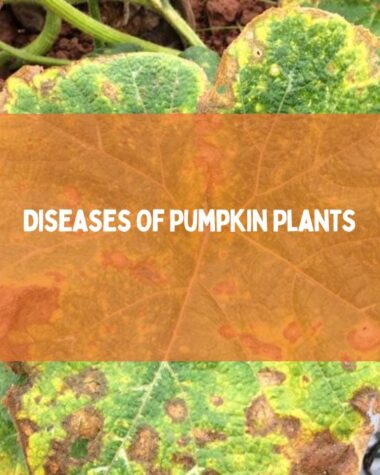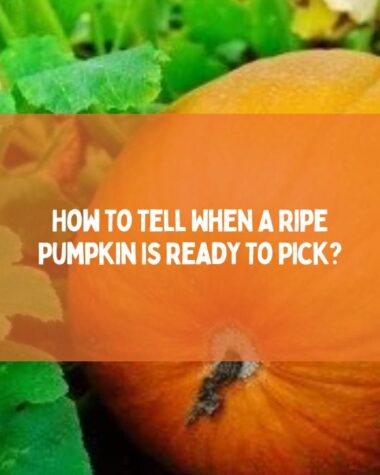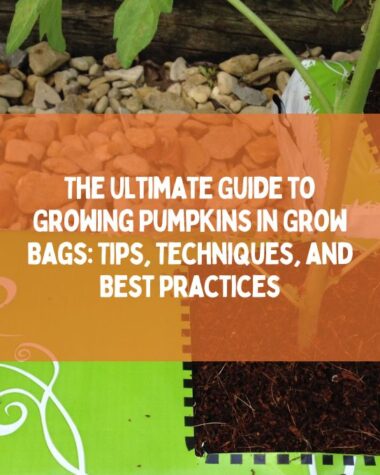Pumpkin flowers falling off can be a natural part of the plant’s life cycle or may be due to environmental factors or pest and disease issues. It’s important to monitor the plant closely and take appropriate steps to address any problems to ensure a healthy harvest.
Pumpkin plants produce both male and female flowers. Male flowers appear first, and female flowers develop later. One of the main reasons for pumpkin flowers falling off is due to the natural process of pollination. Pest and disease issues can also cause pumpkin flowers to fall off.
In this article, I will explain to you the main reasons your pumpkin flowers are falling off.
Let’s start!
9 Reasons Your Pumpkin Flowers Falling Off
Pumpkin flowers can fall off for many reasons, including natural plant processes, environmental factors, pests, and diseases.
In this response, we will explore some of the main reasons why pumpkin flowers fall off to help you identify and address any potential problems in your pumpkin garden.
1. Lack Of Pollination
One of the main reasons pumpkin flowers fall off is due to a lack of pollination. Ensuring proper pollination is essential for a healthy and productive pumpkin crop.
Additionally, hand-pollination can be done by using a small brush or cotton swab to transfer pollen from the male flowers to the female flowers. This method is especially useful if there is a shortage of pollinators in the area or if weather conditions are not optimal for pollination.
Fixation
To address this issue, gardeners can take steps to attract more pollinators to their garden, such as planting flowers that bees and other pollinators love. Gardeners can take steps to increase the number of pumpkin flowers that get pollinated and stop the flowers from falling off too soon.
2. Improper Fertilization
Pumpkin plants require a balanced amount of nutrients to grow and produce healthy fruits. If the soil lacks essential nutrients such as nitrogen, phosphorus, or potassium, the plant may suffer from poor growth, weakened stems, and dropped flowers.
On the other hand, overfertilization can also harm the plant and cause flower drops. When there is an excessive amount of fertilizer in the soil, the plant may focus on growing foliage instead of flowers and fruit.
This can lead to “flower abortion,” where the plant sheds the flowers to conserve energy for foliage growth.
Fixation
To avoid improper fertilization, it is important to test the soil’s nutrient levels and follow the recommended fertilization guidelines for pumpkin plants.
3. Sunlight And Stress
Sunlight and stress can also be factors contributing to pumpkin flowers falling off. Stress can also cause pumpkin flowers to fall off. Stressful conditions such as drought, high temperatures, and high humidity levels can cause the plant to become weak and drop flowers.
Pumpkin plants require adequate sunlight to grow and produce healthy fruits. If the plant is not getting enough sunlight, it may drop flowers as a way to conserve energy. The pumpkin plant is getting at least 6–8 hours of direct sunlight per day.
Fixation
To reduce stress on the pumpkin plant, it is important to provide consistent watering and avoid letting the soil dry out completely. Mulching around the plant can also help retain moisture in the soil and reduce stress on the plant.
Related Reading:
- Cucumber Leaf Curl: Causes and Solutions for Healthy Plants
- Catfacing Tomato: How To Identify, Treat and Prevent Them?
4. Blossom End Rot
Blossom end rot is a disorder that can occur in pumpkin plants, and it can also cause flowers to fall off. A calcium deficiency in the developing fruit is what causes blossom end rot. The lack of calcium causes the fruit to develop a sunken, dark spot on the blossom end, which can cause the fruit to rot and pumpkin blossoms to fall off.
Blossom end rot can be caused by a number of things, such as inconsistent watering, too much heat, too much humidity, and an imbalance in the soil’s pH. When this happens, the vine dies.
Inconsistent watering can lead to fluctuations in the soil’s moisture level, which can make it difficult for the plant to absorb calcium. High heat and humidity can also cause the plant to lose water through transpiration, which can further exacerbate calcium deficiency.
5. Excessive Nitrogen
Falling pumpkins are the cause of excessive nitrogen. Nitrogen is an essential nutrient for plant growth and development, but too much of it can cause problems. When pumpkin plants get too much nitrogen, they might make too much foliage instead of flowers or pumpkins.
This condition is known as “vegetative dominance,” and it can cause pumpkin flowers to drop off before they can develop into a fruit. Excessive nitrogen can also lead to other issues, such as reduced root growth and increased susceptibility to pests and diseases.
6. Fungus And Insects Attacks
Fungal attacks, such as powdery mildew, can cause pumpkin flowers to wilt and drop off. Powdery mildew is a fungal disease that affects the leaves and stems of plants and can spread to the flowers. It appears as a powdery white coating on the leaves and stems.
Insects, such as squash bugs, can also cause pumpkin flowers to fall off. Squash bugs are common pests of pumpkin plants and feed on the leaves, stems, and flowers. They can cause flowers to wilt and drop off, and they can also transmit diseases.
7. No Flowers
If there are no flowers on the pumpkin plant, then the issue of falling flowers is not relevant. However, the lack of flowers could be due to several reasons:
- Lack of Pollination: Pumpkins require pollination to produce flowers and fruit. If there are no pollinators around, or if the flowers are not adequately pollinated, then the plant may not produce any flowers.
- Environmental factors: The pumpkin plant requires optimal growing conditions to produce flowers. This includes the right amount of sunlight, water, and nutrients. If any of these factors are not ideal, then the plant may not produce flowers.
- Plant age: Pumpkin plants typically start producing flowers after 35-45 days of growth. If the plant is still young, it may not have started producing flowers yet.
- Disease and Pest infestation: If the plant is infected with a disease or pest infestation, it may not produce flowers. Pumpkin plant diseases like Fusarium Wilt can cause a plant to wither and die before it even produces any flowers.
8. Drought Conditions
One possible reason why pumpkin flowers may be falling off in drought conditions. When plants don’t receive enough water, they prioritize survival and direct their resources toward maintaining their root systems rather than producing fruit.
Fixation
To prevent this, it’s important to make sure that pumpkin plants are watered adequately, especially during periods of dry weather. The frequency and amount of water needed will depend on various factors, such as the climate, soil type, and the size of the pumpkin plant.
9. Lack Of Watering
A lack of watering can also cause pumpkin flowers to fall off. Water is essential for the growth and development of pumpkin plants, and a lack of it can cause the plant to become stressed, leading to flower drops.
When a pumpkin plant doesn’t receive enough water, the soil becomes dry, and the plant can’t absorb the necessary nutrients and water it needs to sustain the flowers.
Fixation
It’s important to note that overwatering can also be a problem for pumpkin plants, as it can lead to root rot and other issues. So it’s essential to water your pumpkin plants consistently but not excessively, ensuring that the soil remains moist but not waterlogged.
Related Reading:
Conclusion
When a pumpkin plant experiences a lack of water, the soil becomes dry, and the plant can’t absorb the necessary nutrients and water it needs to sustain the flowers, leading to flower drop.
Ensuring that the pumpkin plants receive sufficient sunlight and nutrients, such as fertilizers, can also help prevent flower drop and promote healthy growth and yield. Regular inspection and treatment for pests and diseases can also help keep the plants healthy.
Thanks for reading!







